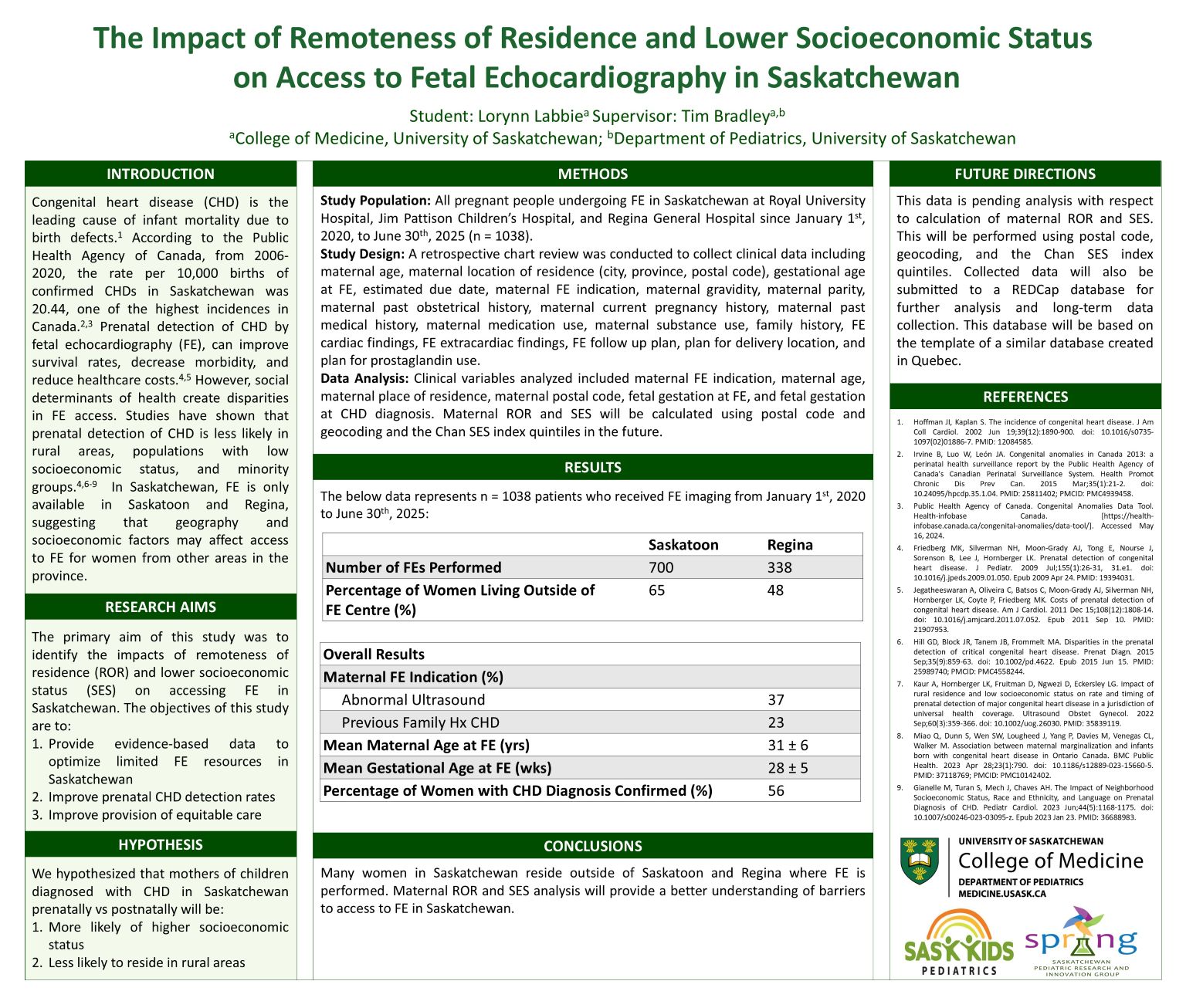
Impact of rural residence and low socioeconomic status on access to fetal echocardiography in Saskatchewan
Lorynn Labbie
Background: Congenital heart disease (CHD) is the leading cause of infant mortality due to birth defects. Prenatal diagnosis by fetal echocardiography (FE), can improve survival rates, decrease morbidity, and reduce healthcare costs. The aim of this study was to identify the impact of remoteness of residence (ROR) and lower socioeconomic status (SES) on access to FE in Saskatchewan.
Methods: Data collected included maternal indications for FE, age, place of residence, postal code, and fetal gestation at FE and CHD diagnosis. Maternal ROR and SES will be calculated using postal code, geocoding, and Chan SES index quintiles.
Results: From 1Jan2020 to 30Jun25, 700 FE were performed in Saskatoon and 338 in Regina. Indications for FE were mostly suspected CHD on obstetric ultrasound (37%), or previous family history of CHD (23%). Mean maternal age at FE was 31±6 years. Most women referred for FE lived outside of Saskatoon (65%) or Regina (48%). Mean gestation at FE was 28±5 weeks and most (56%) had a CHD diagnosis confirmed.
Conclusions: Many women in Saskatchewan live outside Saskatoon and Regina where FE is performed. Maternal ROR and SES analysis will provide a better understanding of barriers to FE access in Saskatchewan.
